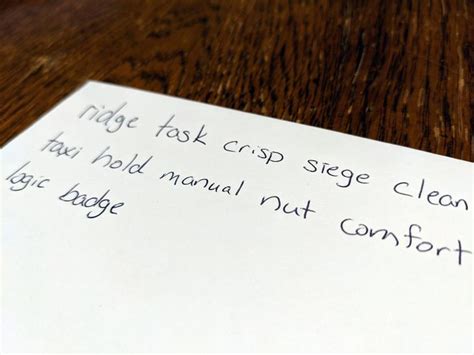وبلاگ
Ethereum: Does BIP39 mnemonic construction avoid repeating words?
Ethereum: Does Bip39 Mnemon structure avoid repeating words?
The decentralized network of Ethereum relies on the complex system of cryptographic keys and mnemon phrases to ensure safe storage of user private keys. At the heart of this system is a proposal to improve bitcoin (BIP) 39, also known as Bip39 or derivatives from the seed phrase. This protocol allows users to generate unique keys based on seeds that can be used for different purposes, including signing transactions, creating wallets and interaction with third -party services.
One of the usual concerns when it comes to the mnemon construction is whether all 24 words of the seed phrase will be unique with specification. In other words, is there a possibility that the word can take two positions in the valid seed, which potentially leads to duplicated or incomplete keys?
BIP39 MNEMONON CONSTRUCTION ALGORITMA
BIP39 uses a simple but effective algorithm to generate mnemon phrases. The process includes random selection of 12 words from a predefined set of possible words, which is usually presented as a list of letters and symbols (eg uppercase and lowercase letters, digits, interpunction markings). These 12 words are used to create seed phrases.
The algorithm chooses each word randomly, ensuring that the two chosen words are not identical. However, it is crucial to note that the selection process does not guarantee uniqueness in all possible combinations of 12 words. There is still a possibility that certain words or even certain words of the word lead to duplicated keys.
The word order and duplicated keys

To illustrate this point, consider an example using a predefined census of 256 possible words (a more realistic number of 128, which is often cited as the maximum size of the mnemon phrase). The Bip39 algorithm selects 12 random words from this list. In the worst scenario, all 24 positions in the seed could be busy with the same words, leading to duplicated keys.
For example, if we consider two possible orders for words:
Word order A:
Tool -> #8 I #20
Word order B:
Tool -> #10 I #12
In both cases, the word “tool” appears twice in a valid seed phrase. This shows that, yes, it is technically possible for the Mnemon structure to lead to duplicated keys.
Conclusion
Although BIP39 provides an effective algorithm for generating unique mnemon phrases, there is still a possibility of duplicated keys under certain circumstances (eg certain commands or words of words). To alleviate this risk, users can consider the following best practices:
- Use a generator of random numbers to choose words from a large predefined list.
- Avoid choosing words that are too similar in a spelling or sample of letters.
- Consider using a password manager that generates and stores unique Mnemon phrases.
Understanding how BIP39 construction algorithms work and take steps to reduce the risk of duplicated keys, users can enjoy a safe and private warehouse of the Ethereum network.



